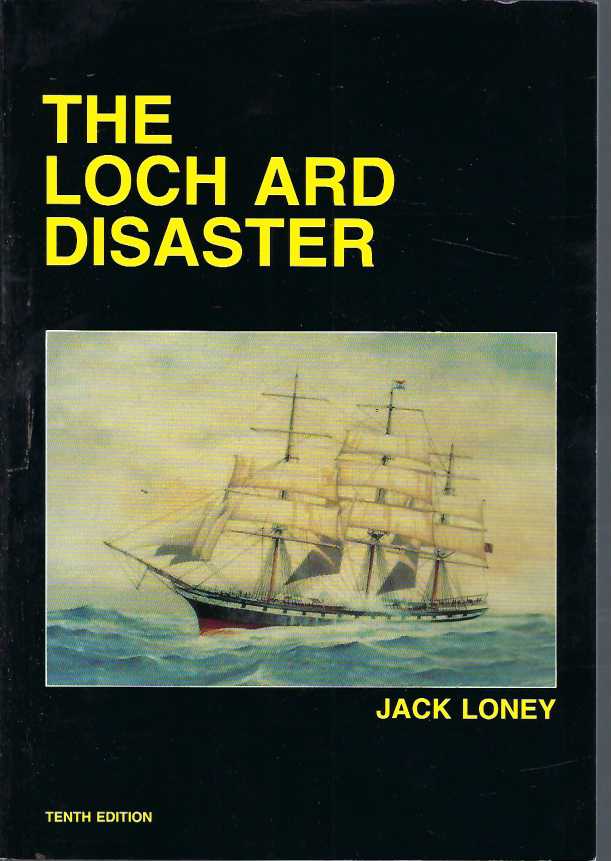48 p. : ill., maps, ports. ; 21 cm. #200522
Loch Ard (Ship) | Shipwrecks — Victoria — Mutton Bird Island.
Loch Ard departed England on 1 March 1878, bound for Melbourne, commanded by Captain Gibb and with a crew of 37 men. It was carrying 17 passengers and assorted cargo (total of 54 people). On 1 June, the ship was approaching Melbourne. The crew expected to sight land but encountered heavy fog. The inquest determined that, unable to see the Cape Otway lighthouse; having faulty chronometers on board; and not having been able to take a reading to establish his exact position due to bad weather conditions over the previous few days, the captain was unaware how close he was running to the coast. The fog lifted around 4am, revealing breakers and cliff faces. Gibb quickly ordered sail to be set to come about and get clear of the coast, but they were unable to do so in time, and ran aground on a reef. The masts and rigging came crashing down, killing some people on deck and preventing the lifeboats from being launched effectively. The ship sank within 10 or 15 minutes of striking the reef.
The widespread popular belief that Gibb mistook the opening of the nearby Loch Ard Gorge for Port Phillip Heads has no basis in fact or probability: there is no physical or cartographic resemblance whatsoever; ships are obliged to stop outside the Heads to take on a pilot; and the Loch Ard never entered the Gorge at all.
The only two survivors of the wreck were Eva Carmichael, who survived by clinging to a spar for five hours, and Thomas “Tom” R. Pearce, an apprentice who clung to the overturned hull of a lifeboat. Pearce came ashore first, then heard Carmichael’s shouts and went back into the ocean to rescue her. They came ashore at what is now known as Loch Ard Gorge and sheltered there before seeking assistance. Coincidentally, Pearce was the stepson of James Pearce, captain of the SS Gothenburg.[3]
The Loch Ard Peacock, from the Loch Ard disaster, now at Flagstaff Hill Maritime Museum
Loch Ard’s cargo included a range of luxury goods, including a grand piano which later washed up in the Gorge, and a large decorative porcelain peacock made by Minton in England, intended to be displayed in the Melbourne International Exhibition in 1880. The peacock was recovered intact and was eventually able to be displayed a century later for the Victoria Pavilion at the Brisbane 1988 World Exposition. It is now on display at the Flagstaff Hill Maritime Museum in Warrnambool, along with a number of other relics of the wreck.
